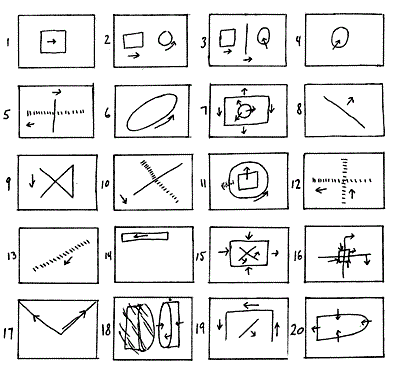Constructed Situations
March 8th, 2010This post had been up some weeks ago, briefly, but for the sake of not ruining the experience of potential gallery visitors I took it down; so here it is again…
http://www.frieze.com/blog/entry/tino_sehgal_at_jan_mot_gallery_or_not/
An article about Tino Sehgal by Jörg Heiser
Drifting and Navigating
December 3rd, 2009by Anthony Marcellini
Not Going the Distance: Reflections on Bertolt Brecht and Binary Thinking Brought up in the 11th International Istanbul Biennial.
COLLECTIVITY? YOU MEAN COLLABORATION
December 2nd, 2009The Zone
December 2nd, 2009File Name .........................................: Stalker.1979.DVDRip.XviD.AC3.Mono.CD1-KG.avi File Size (in bytes) ............................: 735,004,672 bytes Runtime ............................................: 1:02:46
http://thepiratebay.org/torrent/5158063/%5B1979%5D_Stalker_-_Andrei_Tarkovsky
What can be put in the place of the public sphere
November 6th, 2009We Live In Public
November 2nd, 2009May I Help You?
October 30th, 2009ANDREA FRASER
1991
The New York art gallery is installed with an exhibition of approximately 100 of Allan McCollum’s Plaster Surrogates. The objects, which have black centers, white mats, and frames in shades of red, are hung in a single continuous row that wraps around three of the gallery’s walls.
Seated behind a desk along the south wall of the exhibition space are three performers who constitute “The Staff.” They are “busy” with what looks like gallery business hidden behind a low, white, plaster-board wall.
A visitor enters the gallery and makes her way to the center of the exhibition space. As the visitor begins to look at the exhibition, one member of The Staff gets up, walks over and begins to speak
1.
Grey/Gray Zone/Area
October 27th, 2009http://en.sevenload.com/videos/OhedvzX-12-second-English-Idioms-Grey-area
H. Baert:
ENG/
a grey zone is a space of potentiality. It’s a process-oriented zone with a focus on action. It’s a dynamic zone where information, ideas, research and work are exchanged. The grey zone is collaborative and networked. It asks for participation from other artists and art forms, spectators, visitors and the one passing by.
It questions the existing structures, logic and institutions, haw ever it doesn’t have the institutional critique as only reason of existing. It’s a zone that attempts to be flexible and transparant and operates outside the traditional boundaries or definitions.
A conscious noise in the margin.
Metaphors that move the body
October 15th, 2009http://www.metropolism.com/magazine/2008-no1/english
- An article by Jan Verwoert, published in Metropolis M, Feb. 2008
Metaphors are useful. They make you see things. Take ‘The world is a stage’ for example. It’s just a picture. But it allows you to observe the ‘roles’ we play when we engage in social life.
Performance – Performative
October 14th, 2009Some background from the University of Chicago; theories of media; keywords glossary
Grey zone: Exploring what’s between “socially imposed scripted performances” and the realization of “the body as a self-actualizing text”
The Immediated Now: Network Culture and the Poetics of Reality
September 22nd, 2009Networked: a (networked_book) about (networked_art) INVITES YOU TO PARTICIPATE: Two years in the making, Networked: a (networked_book) about (networked_art) is now open for comments, revisions, and translations.
The Immediated Now: Network Culture and the Poetics of Reality
Hello world! – Three Distributions
February 11th, 2009LECTURE ON MOVING
> PEOPLE PLAN <

Yvonne Rainer, US | b. 1934